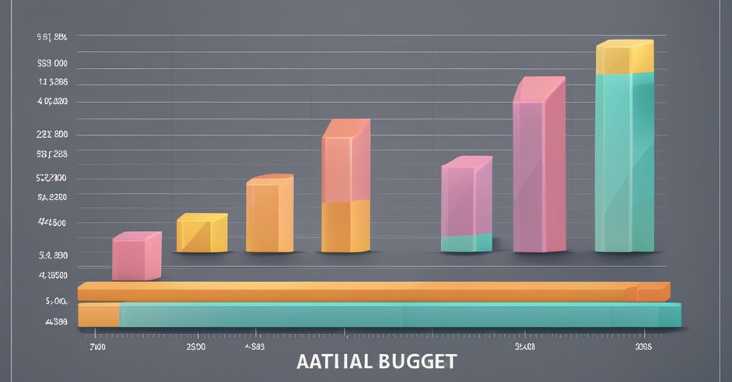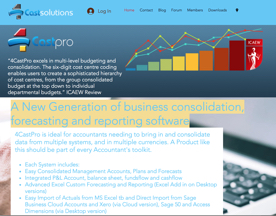What is a budget variance? A budget variance is the difference between the budgeted and actual amounts for income or expenses in a given period.
Budget variance is a crucial concept in finance that helps businesses and individuals understand the difference between planned and actual spending. It refers to the difference between the budgeted amount and the actual amount spent on a particular item or activity. Budget variance analysis is an essential tool for financial planning, control, and decision-making.

Understanding budget variance is critical for effective financial management. It helps businesses and individuals to identify areas of overspending or underspending, and make necessary adjustments to their financial plans. Budget variance analysis involves comparing planned and actual spending, and identifying the factors that contributed to the variance. This analysis helps businesses and individuals to make informed decisions about future spending, and to develop strategies for managing their financial resources more effectively.
Key Takeaways
- Budget variance is the difference between the budgeted amount and the actual amount spent on a particular item or activity.
- Budget variance analysis is an essential tool for financial planning, control, and decision-making.
- Understanding the components of budget variance, analyzing variances, and managing and mitigating variances are critical for effective financial management.
Understanding Budget Variance
Definition and Importance
Budget variance refers to the difference between the budgeted amount and the actual amount spent or earned. It is an essential tool for businesses to monitor and control their financial performance. By analyzing budget variances, businesses can determine whether they are on track to meet their financial goals or if they need to make adjustments to their budget.
There are two types of budget variances: favorable and unfavorable. A favorable variance occurs when the actual amount is less than the budgeted amount, while an unfavorable variance occurs when the actual amount is more than the budgeted amount. A positive variance is another term for a favorable variance, while a negative variance is another term for an unfavorable variance.
Types of Variances
There are several types of budget variances that businesses need to be aware of. The most common types of variances include:
Revenue Variance: This type of variance occurs when the actual revenue is different from the budgeted revenue. If the actual revenue is higher than the budgeted revenue, it is a favorable variance, while if it is lower, it is an unfavorable variance.
Expense Variance: This type of variance occurs when the actual expenses are different from the budgeted expenses. If the actual expenses are lower than the budgeted expenses, it is a favorable variance, while if they are higher, it is an unfavorable variance.
Volume Variance: This type of variance occurs when the actual sales volume is different from the budgeted sales volume. If the actual sales volume is higher than the budgeted sales volume, it is a favorable variance, while if it is lower, it is an unfavorable variance.
Price Variance: This type of variance occurs when the actual price is different from the budgeted price. If the actual price is higher than the budgeted price, it is an unfavorable variance, while if it is lower, it is a favorable variance.
It is important for businesses to understand the different types of budget variances and how they can impact their financial performance. By monitoring and analyzing budget variances, businesses can make informed decisions to improve their financial performance.
For more information on budget variance and how to manage it, check out this resource from Investopedia.
Components of Budget Variance
Budget variance is the difference between the actual results and the budgeted amounts. It is an essential tool used by businesses to measure their financial performance and evaluate their budgeting process. There are two main components of budget variance, revenue variance, and expense variance.
Revenue Variance
Revenue variance is the difference between the actual revenue and the budgeted revenue. It is calculated by subtracting the budgeted revenue from the actual revenue. A positive revenue variance indicates that the actual revenue exceeded the budgeted revenue, while a negative revenue variance indicates that the actual revenue fell short of the budgeted revenue.
There are several factors that can contribute to revenue variances, such as changes in pricing, sales volume, and market conditions. By analyzing revenue variances, businesses can identify areas where they need to improve their sales and marketing strategies to achieve their revenue targets.
Expense Variance
Expense variance is the difference between the actual expense and the budgeted expense. It is calculated by subtracting the budgeted expense from the actual expense. A positive expense variance indicates that the actual expense was less than the budgeted expense, while a negative expense variance indicates that the actual expense exceeded the budgeted expense.
Expense variances can occur due to a variety of reasons, such as unexpected increases in costs, changes in production levels, and changes in market conditions. By analyzing expense variances, businesses can identify areas where they need to reduce their costs and improve their operational efficiency to achieve their financial targets.
To learn more about budget variance and how to calculate it, check out this resource from Investopedia.
Analyzing Budget Variances
Variance Analysis Process
Variance analysis is the process of comparing actual amounts to budgeted amounts to determine the deviation, or variance, between them. This process is crucial for identifying the root cause of significant variances and taking corrective action to improve future performance.
The first step in variance analysis is to calculate the difference between actual and budgeted amounts for each line item in the budget. Once the variances have been calculated, it is important to prioritize them based on their significance and potential impact on the overall budget.
Next, the root cause of each significant variance must be identified. This can involve analyzing internal and external factors that may have contributed to the variance, such as changes in market conditions, unexpected expenses, or changes in customer demand.
Interpreting Variance Analysis Results
Interpreting the results of variance analysis is essential for making informed decisions about budgeting and resource allocation. One key factor to consider is the direction of the variance. A positive variance indicates that actual amounts were higher than budgeted amounts, while a negative variance indicates that actual amounts were lower than budgeted amounts.
Another important factor to consider is the magnitude of the variance. Small variances may not be significant enough to warrant action, while larger variances may require immediate attention.
Finally, it is important to consider the root cause of the variance when interpreting the results. By understanding the reasons behind the variance, organizations can take steps to address the underlying issues and improve future performance.
For more information on variance analysis and budget variance analysis, check out this resource from Investopedia.
Factors Influencing Budget Variances

Budget variances occur when there is a difference between the actual and budgeted amounts. These differences can be favorable or unfavorable, and they can be influenced by several factors. In this section, we will discuss some of the factors that can influence budget variances.
Market Changes
Changes in the market can have a significant impact on budget variances. For example, if a company is in the retail industry and there is a sudden increase in competition, the company may have to lower its prices to remain competitive. This could result in a decrease in revenue and, therefore, a negative budget variance. On the other hand, if the company is able to adapt to the changes in the market and increase its market share, it could result in a positive budget variance.
According to Investopedia, market changes can include shifts in consumer preferences, changes in technology, and changes in the regulatory environment.
Economic Conditions
Economic conditions can also have a significant impact on budget variances. For example, if there is a recession, consumers may be more cautious with their spending, which could result in a decrease in revenue for a company. This could lead to a negative budget variance. On the other hand, if the economy is booming, consumers may be more willing to spend, which could result in an increase in revenue and a positive budget variance.
According to The Balance, economic conditions can include factors such as inflation, interest rates, and GDP.
Operational Efficiencies
Inefficient operations can also lead to budget variances. For example, if a company is not managing its inventory effectively, it could result in stockouts or overstocking, both of which can be costly. This could lead to unexpected costs and a negative budget variance. On the other hand, if a company is able to improve its operational efficiencies, it could result in cost savings and a positive budget variance.
According to Harvard Business Review, operational efficiencies can be achieved by focusing on three key elements: process, technology, and people.
In summary, budget variances can be influenced by several factors, including changes in the market, economic conditions, and operational efficiencies. By understanding these factors and taking steps to mitigate their impact, companies can improve their budgeting processes and achieve their financial goals.
Budgeting Approaches and Variance

Budgeting is an essential process for any organization to allocate resources and plan for future activities. However, there is always a chance of variance between the actual and projected budget. In this section, we will discuss different budgeting approaches and their impact on variance.
Static vs. Flexible Budgeting
Static budgeting is a traditional approach that involves creating a budget based on a fixed set of assumptions. In contrast, flexible budgeting is a dynamic approach that allows for adjustments based on changes in the business environment. Flexible budgets are more accurate as they consider the variations in the business environment, which can impact revenue and expenses.
One way to understand the difference between static and flexible budgeting is to look at variable and fixed costs. Variable costs change with the level of activity, while fixed costs remain constant regardless of the level of activity. A static budget assumes that the level of activity will remain constant, while a flexible budget can adjust for changes in activity levels.
To learn more about the differences between static and flexible budgeting, check out this resource from Investopedia.
Capital Budgeting and Variance
Capital budgeting is a process used to determine whether an organization’s long-term investments are worth the cost. Variance in capital budgeting occurs when the actual cost of a project differs from the projected cost. This can happen due to changes in the project scope, unexpected expenses, or other factors.
One way to mitigate variance in capital budgeting is to use sensitivity analysis. Sensitivity analysis involves changing one variable at a time to see how it impacts the overall project cost. This can help organizations identify potential risks and adjust their budget accordingly.
To learn more about capital budgeting and variance, check out this resource from Investopedia.
In conclusion, understanding different budgeting approaches and their impact on variance can help organizations make more accurate projections and better allocate resources. By using flexible budgeting and sensitivity analysis, organizations can reduce the impact of variance and make more informed decisions.
Managing and Mitigating Variances

When it comes to budget variances, it’s important to take action to manage and mitigate them. This section will cover two main approaches to dealing with variances: corrective actions and preventive measures.
Corrective Actions
Corrective actions are steps taken to address budget variances that have already occurred. These actions are typically reactive, and are designed to bring the budget back in line with projections or forecasts.
One common corrective action is to adjust spending in areas where costs have exceeded projections. For example, if a project has gone over budget due to unexpected costs, the team may need to cut back spending in other areas to make up the difference.
Another corrective action is to revise projections or forecasts to better reflect actual costs. This may involve gathering more data or adjusting assumptions to get a more accurate picture of what’s actually happening.
Preventive Measures
Preventive measures are steps taken to avoid budget variances before they occur. These actions are typically proactive, and are designed to prevent problems from arising in the first place.
One common preventive measure is to establish clear financial planning processes that involve regular reviews and updates of projected costs. This can help catch potential variances early on, before they become major problems.
Another preventive measure is to establish contingency plans for unexpected costs or changes in scope. This can help ensure that the budget remains on track even if unforeseen circumstances arise.
By taking a proactive approach to managing and mitigating variances, organizations can avoid the negative impacts that budget variances can have on their bottom line. For more information on managing budget variances, check out this resource from Investopedia.
Reporting and Communication

Effective reporting and communication of budget variances is crucial for organizations to manage their finances efficiently. This section will discuss the importance of variance reports and dashboards, as well as communicating variances to stakeholders.
Variance Reports and Dashboards
Variance reports and dashboards are essential tools for monitoring budget performance. A variance report compares actual financial results to budgeted amounts, highlighting areas where actual results differ significantly from the budget. This information can help organizations identify potential issues and take corrective action.
Spreadsheets are commonly used to create variance reports, but there are also specialized software solutions available that can automate the process and provide more detailed analysis. For example, some software can generate reports that show the variance by account, department, or project.
Dashboards provide a visual representation of budget variances, making it easier to identify trends and patterns. Dashboards can include charts, graphs, and other visual aids that help users quickly understand the data. This information can be used to make informed decisions about budget adjustments and resource allocation.
Communicating Variances to Stakeholders
Effective communication of budget variances is critical for ensuring that stakeholders are aware of any issues and can make informed decisions. Stakeholders may include executives, board members, investors, employees, and other interested parties.
Financial statements are a common way to communicate budget variances to stakeholders. These statements provide an overview of the organization’s financial performance, including revenue, expenses, and net income. Financial statements should be prepared in accordance with generally accepted accounting principles (GAAP) and should include a clear explanation of any significant variances.
In addition to financial statements, organizations may also use presentations, meetings, and other communication methods to discuss budget variances with stakeholders. It is important to tailor the communication to the audience, using language and terminology that is easily understood.
Overall, effective reporting and communication of budget variances is essential for organizations to manage their finances effectively and make informed decisions. Organizations should use a variety of tools and methods to communicate variances to stakeholders and ensure that everyone is aware of any issues.
Here is a link to a resource that provides more information on variance analysis.
Case Studies and Examples

Successful Variance Management
One example of successful budget variance management comes from XYZ Corporation, a large manufacturing company. The company’s management team implemented a system of regular budget reviews and variance analysis, which allowed them to quickly identify and address any budget variances. By closely monitoring their actual performance against their budgeted revenues and expenses, they were able to make timely adjustments to their operations and avoid any significant unfavorable variances.
Another successful example comes from ABC Corporation, a retail company. They implemented a system of employee incentives tied to budget performance. This motivated employees to closely monitor their departmental budgets and make adjustments as needed to stay on track. As a result, the company experienced a significant increase in profitability and net income.
Lessons Learned from Variance Issues
Despite best efforts, variance issues can still arise. One example comes from DEF Corporation, a construction company. They experienced a material variance due to a supplier delivering subpar materials. This resulted in a significant unfavorable variance and a delay in project completion. The company learned the importance of thoroughly vetting suppliers and having contingency plans in place for unexpected events.
Another example comes from GHI Corporation, a technology company. They experienced an unfavorable overhead variance due to increased competition and the need to invest in new technology. The company learned the importance of regularly reviewing their budget and making adjustments as needed to stay competitive and profitable.
To perform budget variance analysis, it is important to understand the percentage variance formula and the causes of budget variances. Employee fraud can also be a contributing factor and should be thoroughly investigated if suspected.
One external resource that has high authority on the topic of budget variance is Investopedia’s article on How to Perform Budget Variance Analysis. It provides a clear and concise overview of the topic and includes helpful tips and examples.
Frequently Asked Questions

What factors typically lead to budget variances?
Budget variances can be caused by a variety of factors, including changes in market conditions, unexpected expenses, inaccurate forecasting, and poor financial management. Some other factors that can lead to budget variances include inflation, changes in interest rates, and unexpected changes in demand for goods or services.
How is budget variance analysis conducted in financial management?
Budget variance analysis is a process that involves comparing actual financial results against the budgeted amounts. This analysis is typically done on a regular basis, such as monthly or quarterly, to identify any significant variances and determine the root causes. The analysis involves comparing actual revenues and expenses to the budgeted amounts, and then calculating the differences between the two.
What are the main types of budget variances in accounting?
There are several types of budget variances in accounting, including revenue variances, expense variances, and profit variances. Revenue variances occur when actual revenue is different from the budgeted amount, while expense variances occur when actual expenses are different from the budgeted amount. Profit variances occur when the actual profit is different from the budgeted profit.
How can organizations address and correct significant budget variances?
Organizations can address and correct significant budget variances by identifying the root causes of the variances and taking corrective action. This may involve adjusting budgets, reducing expenses, increasing revenues, or improving financial management practices. It is important to address significant budget variances promptly to avoid further financial problems.
What methods are used to display or represent budget variances in reports?
There are several methods used to display or represent budget variances in reports, including tables, graphs, and charts. These methods can help to make the data easier to understand and interpret, and can also highlight significant variances. Some organizations may also use color coding or other visual aids to help identify and analyze budget variances.
What constitutes an acceptable level of budget variance for a company?
The acceptable level of budget variance for a company will depend on a variety of factors, including the size of the organization, the industry, and the specific budget items being analyzed. In general, smaller variances are preferable to larger ones, and variances that are within a certain percentage of the budgeted amount may be considered acceptable. However, each organization will need to establish its own guidelines for acceptable levels of budget variance based on its unique circumstances.
Source: Investopedia













